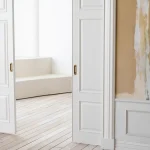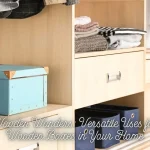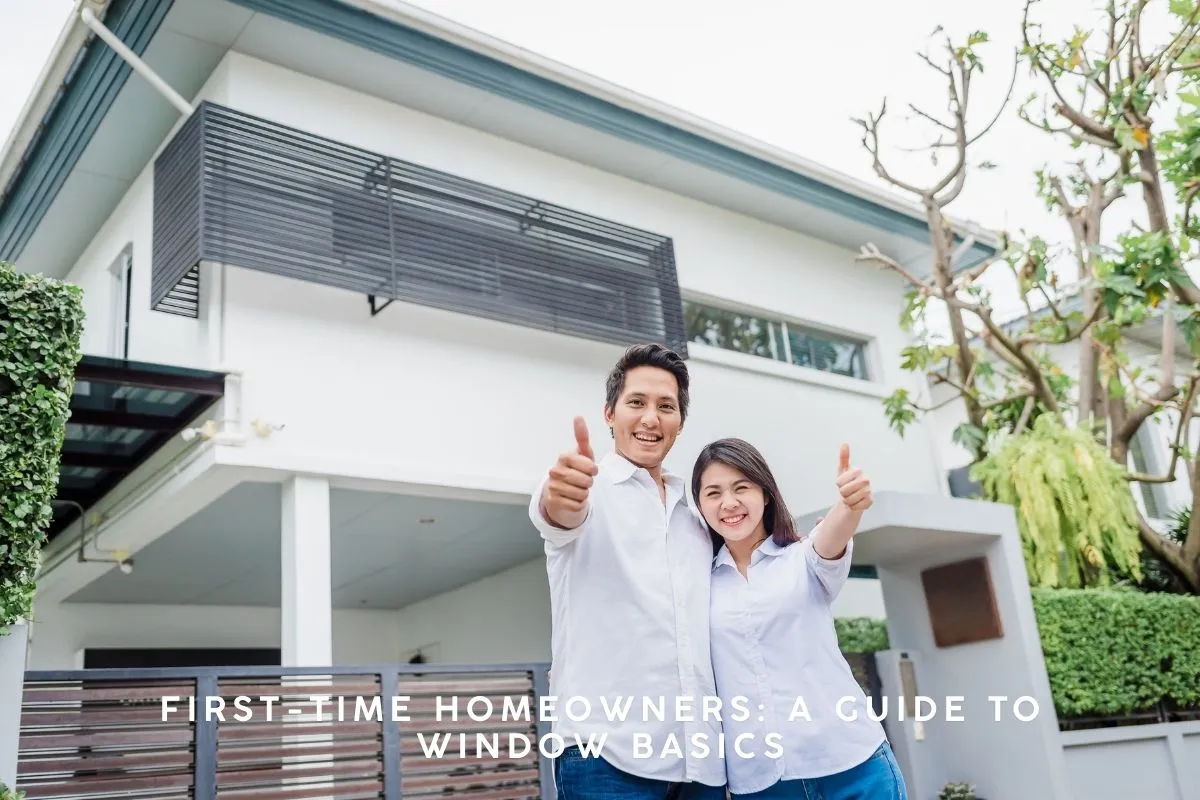Moving into your first home is incredibly exciting! Among all the decisions you’ll face, choosing and understanding your windows might not be top of mind—until you realize how essential they are for light, energy efficiency, and even the comfort of your space. With the right insights, you’ll be equipped to make choices that add value, style, and efficiency to your new home.
Windows do so much more than provide a view or let in a breeze. As Bob Vila, a well-known TV host and contractor, puts it, “Windows are more than just openings in your walls; they’re portals to the outside world, influencing your home’s energy efficiency, security, and aesthetic appeal.” Let’s dive into some essential tips and considerations for first-time homeowners to make the most of their windows.
Table of Contents
Toggle1. Understanding Window Types and Styles
Different types of windows serve different purposes, so getting to know the basics can help you decide what’s right for each room in your home.
- Single-Hung and Double-Hung Windows: These are classic, popular styles. With single-hung windows, only the bottom sash opens, while double-hung windows allow both the top and bottom sashes to move. Double-hung windows are great for ventilation since they can open at both the top and bottom, creating air circulation without the wind tunnel effect.
- Casement Windows: These windows hinge at the side and swing outward. They’re fantastic for rooms where you want to catch a breeze since they can open fully.
- Sliding Windows: Sliding horizontally, these windows are simple to operate and perfect for wide spaces.
- Picture Windows: Ideal for scenic views, these are large, fixed windows that don’t open. They’re usually energy efficient since there are no moving parts, reducing the chance of air leakage.
- Bay and Bow Windows: Extending outward, these windows add character and space. They’re perfect for areas where you want a bit of a cozy nook.
When I moved into my first home, I realized that the previous owner had used a mix of window styles. At first, I wondered if it was necessary, but soon I saw the logic: certain types really did suit specific spaces better!
2. Focusing on Energy Efficiency
Windows plays a significant role in how much energy your home uses. If you’re in a cold climate, they can account for a lot of heat loss, while in warm climates, they can increase cooling needs if they aren’t energy-efficient. For first-time homeowners looking to make the most of their investment, energy-efficient windows are key.
Look for windows with low-emissivity (low-E) coatings. These coatings reflect infrared light, keeping heat inside during winter and outside during summer. According to Chip Wade, HGTV host, “Energy-efficient windows can help you save money on heating and cooling costs. Look for windows with low-E coatings and high-performance frames.” These coatings make a noticeable difference in your comfort and energy bills over time.
3. Thinking About Placement and Natural Light
The placement of your windows impacts the light in your home. As Nate Berkus, a renowned interior designer, points out, “Don’t underestimate the impact of window placement on your home’s natural lighting and ventilation.” Windows strategically placed to capture the morning or afternoon sun can brighten your space naturally, reducing the need for artificial lighting.
For my own home, I love having morning light in the kitchen—it feels refreshing and energizing. Meanwhile, a west-facing bedroom window can mean evening light that’s perfect for a cozy, relaxing space. But beware if you have direct sunlight coming in, especially from the south- or west-facing windows, you might want to consider window treatments like blinds or curtains to help manage the heat and glare.
4. Choosing the Right Window Treatments
Window treatments are about more than just style—they’re functional, too. They allow you to control the light and privacy in your home and can add a layer of insulation. As Hilary Farr, an interior designer, advises, “When it comes to window treatments, consider both function and style. Blinds, shades, and curtains can help control light, privacy, and temperature.”
- Blinds and Shades: Blinds and shades are great for bedrooms or media rooms where you want to block out light entirely. Some shades, such as honeycomb or cellular shades, also provide added insulation.
- Curtains: Heavier curtains can help keep out the chill in winter, while lighter curtains allow airflow in summer. They’re ideal for living rooms or bedrooms where you want to add a touch of style.
- Tinting or Film: In rooms with direct sunlight, you might consider adding a film to reduce glare and UV exposure without losing your view.
5. Prioritizing Window Maintenance
Window maintenance is easy to overlook, but it’s crucial for long-term performance. Mike Holmes, a respected contractor, emphasizes that “Regular window maintenance is essential to ensure their longevity and performance.” Cleaning, sealing, and lubricating your window hardware can prevent common issues like drafts or leaks.
- Cleaning: Dust and debris can build up in the tracks of sliding windows or at the seals. Regular cleaning keeps everything moving smoothly.
- Sealing: Over time, seals around windows can wear down. A drafty window can make your heating and cooling less effective, so check and reseal as needed.
- Lubricating: Hinged or sliding windows work best when they’re lubricated. Use a silicone spray to keep things moving without attracting dust.
When I first took on these maintenance tasks, I realized that a little goes a long way. With regular upkeep, my windows continued to work like new and felt solid in their frames.
6. Choosing the Right Frame Materials
Frames come in a variety of materials, each with its pros and cons:
- Vinyl: Affordable and low maintenance, vinyl frames are a common choice for budget-friendly homes. They’re energy efficient and resist moisture but might not be as durable as other materials.
- Wood: Wood frames are classic and insulate well, making them a great choice for both energy efficiency and aesthetics. However, they do require regular upkeep to prevent rot or damage.
- Aluminum: Aluminum is strong and lightweight, making it suitable for larger windows. However, it isn’t as energy efficient and can be prone to condensation in colder climates.
- Fiberglass: Fiberglass frames are incredibly durable and resist expansion and contraction, which helps maintain their energy efficiency over time.
7. Balancing Style with Function
Windows is one of those home elements where function and style go hand-in-hand. Well-designed windows can enhance the look of your home’s exterior while serving as a major design feature inside. As Martha Stewart shares, “When choosing windows for your new home, consider factors like energy efficiency, durability, and style.” A beautiful bay window or set of French doors can serve as a focal point in your home, adding personality and charm.
For my first home, I fell in love with the idea of a picture window in the living room. It was an investment, but it made the room feel open and connected to the outdoors, even when I was curled up inside with a book.
8. Considering Security Features
Safety and security are other important factors, especially for windows on the ground floor. Look for multi-point locking systems or additional features like window sensors that can integrate with a home security system.
9. Understanding the Costs
It’s worth noting that upgrading or replacing windows can be a major investment, but it can also increase your home’s value and improve energy efficiency. First-time homeowners might worry about costs, but consider it an investment in your home’s comfort and appeal.
Conclusion: Windows That Work for You
Your home’s windows do a lot of heavy lifting, from letting in light to keeping you safe and cozy. The right windows for your home depend on style, function, and efficiency. You can create a comfortable, efficient home by understanding the basics, like energy-efficient features, frame materials, and maintenance.
As a first-time homeowner, don’t let windows overwhelm you. Start with one room, make thoughtful choices, and you’ll have a home that feels just right over time. Remember, a little planning goes a long way, and investing in the right windows can make your new house feel like home.
Share via:
Related posts:
 5 Must-Have Interior Doors for Your Home
5 Must-Have Interior Doors for Your Home
 DIY Closet Makeover: Affordable Ways to Transform Your Space
DIY Closet Makeover: Affordable Ways to Transform Your Space
 What Housing is Used on the Pentek BFS 201?
What Housing is Used on the Pentek BFS 201?
 How to Factory Reset MyQ Garage Door Opener: A Simple Guide
How to Factory Reset MyQ Garage Door Opener: A Simple Guide
 Wallpaper Removal Tips: Stripping Wallpaper Without Damage
Wallpaper Removal Tips: Stripping Wallpaper Without Damage
 Wooden Wonders: Versatile Uses for Wooden Boxes in Your Home
Wooden Wonders: Versatile Uses for Wooden Boxes in Your Home
 Discover the Comfort and Style of Honeypot Furniture Fabric Recliner Sofas
Discover the Comfort and Style of Honeypot Furniture Fabric Recliner Sofas



